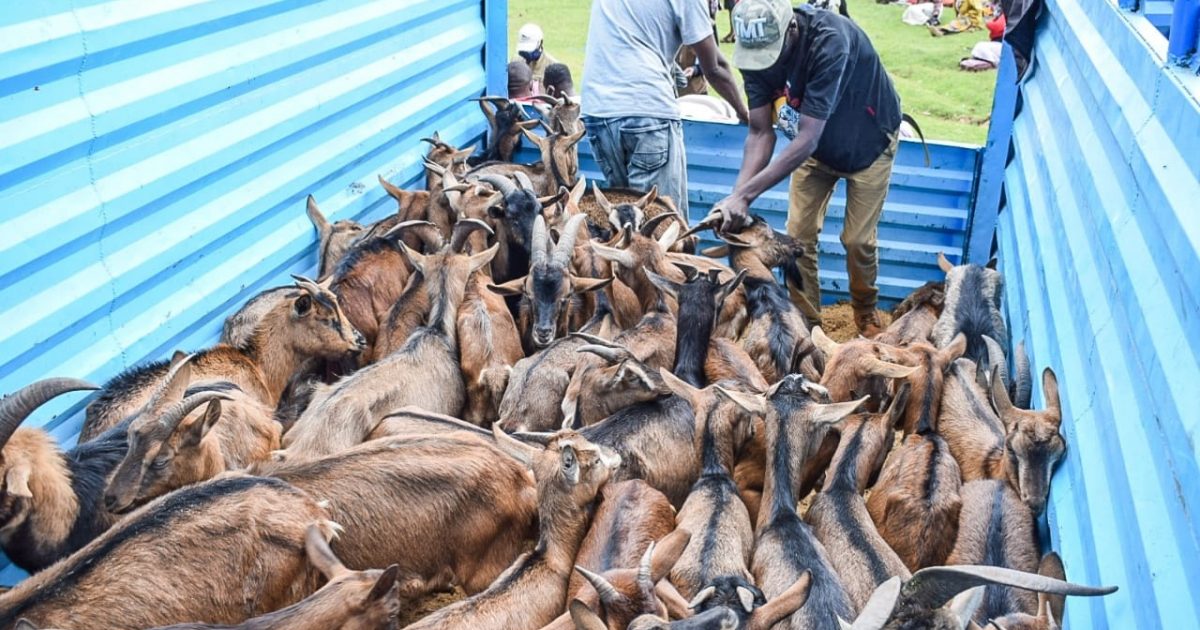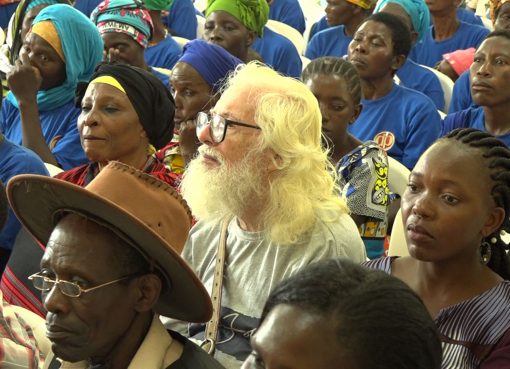Small-holder farmers in Nakuru have received a major boost following the distribution of a superior breed of dairy goats by the county government.
The distribution under the Sh8 million Smallholder Dairy Commercialization Programme (SDCP) is targeting farmers in Rongai, Molo, Njoro, Bahati, Subukia, Nakuru West, Gilgil and Kuresoi South Sub-Counties and is aimed at promoting dairy production.
According to County Veterinary Services Officer, Dr Christopher Auma, the devolved unit has so far purchased and distributed 159 dairy goats in the current financial year.
The purchase is an addition to the 697 goats bought and distributed since the SDCP programme kicked off in 2020.
Dr Auma says the improved breeds which include Toggenburg and Kenyan Alpine are hardy and have the ability to adapt to all agro-climatic conditions while producing to their maximum.
The two breeds notes Dr Auma are the best milk producers and that lactating rarely reduces milk output until they are served. They can be milked for up to eight months after calving.
“Directorate of Livestock has endeavoured to empower the farmers to upgrade from goat herders to dairy farmers where there are high returns depending on the effort put in production. Diminishing land size has created the need for farmers to look for domestic animals they can keep in small units while still maintaining productivity,” the official points out
He indicates that the initiative is designed to improve the livelihoods of women and youth groups in rural parts of the devolved unit through upgrading their stock, increasing milk production enhancing food security and increasing the consumption of goat milk across the county.
The beneficiaries have also received training on home based manufacture of value-added goat products such as pasteurized milk, yoghurt, butter and cheese.
Dr Auma explained that farmers who rear five improved dairy goats stand to benefit 50 percent more than those keeping one dairy cow as goats do not need much feed and space to keep yet their milk always retails at a higher price as compared to that of a cow.
“Farmers need to be aware that a half an acre of Napier grass can support five dairy goats while an equal amount of Napier grass only supports one dairy cow. With this knowledge out there, farmers can make the right decision on which venture to pursue,” notes the veterinary Oofficer.
He states that one dairy cow can yield 20 litres of milk a day which retails at average Sh40 per litre while five dairy goats produce 20 litres of milk daily fetching Sh140 per litre.
“Goat milk production is a good source of income and an avenue to improve rural areas’ economy as consumer acceptance of goat milk and its products is growing,we are also venturing into value addition,” adds the official.
In addition, Dr Auma reveals that the county is engaging various research institutions on conducting several experiments to manufacture mozzarella cheese from blends of cow and goat milk, a skill which will be passed over to the beneficiaries.
“We envisage working at optimum to improve nutritional status of our people, reduce milk importation and to improve access and consequently reduce the cost of milk within the county,” he says.
Dr Auma indicates that so far 40 goats have been distributed in Gatamaiyu village, Malewa West Ward, Gilgil Sub- County, 30 Toggenburg dairy goats have been given to eight farmer groups in Njoro ward, Njoro Sub County, while six farmer groups in Turi ward within Molo Sub County have already received 51 dairy goats and six bucks. Two farmer groups in Subukia ward have received 40 animals, while 17 farmer groups in Mosop Ward within Rongai Sub County have benefited from 57 Alpine goats.
Nakuru County Government has also distributed 125 Alpine dairy goats to 41 farmer groups in Mauche ward within Njoro Sub County, 157 Alpine and Toggenburg breeds to individual farmers in Subukia Sub-County, 117 dairy goats to four farmer groups in Kabazi ward, Subukia Sub County and a further171 Kenyan Alpine in Kapkures, Mosop and Turi Wards.
“The programme is incorporating capacity building on husbandry, feed diversification, record keeping among others with special emphasis on vaccination of Contagious Caprine pleuropneumonia (CCPP-goat pneumonia),” observes the veterinary officer.
County government has also distributed 146 dairy goats under Programme SDCP to individual farmers in Rongai, Njoro, Bahati, Subukia, Nakuru West and Kuresoi South.
He says that all beneficiaries of the programme are smallholder farmers who cannot keep a cow due to their small land sizes or cost of feeding the animal and now prefer to rear dairy goats.
Dr Auma says diminishing land size has created the need for farmers to look for domestic animals they can keep in small units while still maintaining productivity.
“Land and feed resources are becoming a challenge hence the need for smaller animals that can fit into smallholder system and utilize limited feed resource to be able to meet households’ needs,” says the official.
The programme seeks to improve dairy goat productivity and resilience in smallholder farming systems through breeding, multiplication, husbandry technologies and dissemination of superior breeds.
“We are going into a serious selection programme focusing on adaptability and survival. These are key elements in building the resilience of farmers in terms of climate-smart agriculture,” observes Dr Auma.
Other goat breeds kept in Kenya are Oberhasi, Galla, Small East African Goat and Boer. Most farmers keep Alpines and Toggenburgs mainly for milk.
“The genetic material that most dairy goat farmers are using today was imported from South Africa many years ago. Farmers are reusing the same bucks for breeding and this has resulted in inbreeding, low production and stunted growth in animals,” explained the Senior Veterinary Officer.
He notes that the main challenge facing the dairy goat subsector was poor management of the animals, diseases and poor breeds.
Dr Auma reveals that studies have confirmed that nutrients like iron, calcium, magnesium and phosphorus in goat milk were more easily digested and absorbed by the body than those in cow milk.
“The demand for goat milk is growing as it is easier to digest and has higher quantities of amino acids such as tryptophan and calcium than cow’s milk which are crucial for health teeth and bones.
A cow’s milk trails in fatty acid content at 17 percent compared to goat milk’s 35 percent making it more nutritious. It has lower levels of cholesterol making it a safer option for those seeking healthier lifestyles,” he adds.
The programme he adds has also equipped the farmer groups with knowledge on the different goat breeds, feeding, pests, prevention and cure of most probable diseases and housing.
He advises dairy goat farmers to construct pens that shield the animals from wind, direct sunlight and rain and must have adequate resting areas if they are to produce more milk.
“A good goat shed should have separate feeding and resting areas. And it should be raised two feet from the ground, should be properly ventilated, well-lit and kept neat, clean and dry as dampness attracts pests and diseases,” states Dr Auma.
He says that sanitation, decontamination and ventilation in the pens are necessary to rid mites off goats, which cause both health and economic losses.
“Many small holder farmers have opted for zero-grazing systems as it limits the dairy goats’ exposure to parasites and infectious diseases as compared to those in free-range. Minimized movements lower their risk of coming into contact with disease causing organisms,”
He, however, notes that poor ventilation in zero grazing units may cause respiratory diseases, the leading cause of death in goats.
Dr Auma explains that goats kept under zero-grazing should be fed on Napier grass, Rhodes grass, Kikuyu grass, maize and hay.
“They also love Lucerne, calliandra, leucena, desmodium, mulberry, sweet potato vines, cotton seed cake, sunflower cake and soy bean cake for proteins, feeds that are, however, harder to come by,” he adds.
He says that the County Administration was ensuring that the dairy goats were dewormed and vaccinated on a regular basis as they are sensitive to pests and diseases.
By Anne Mwale and Mercy Syombua





